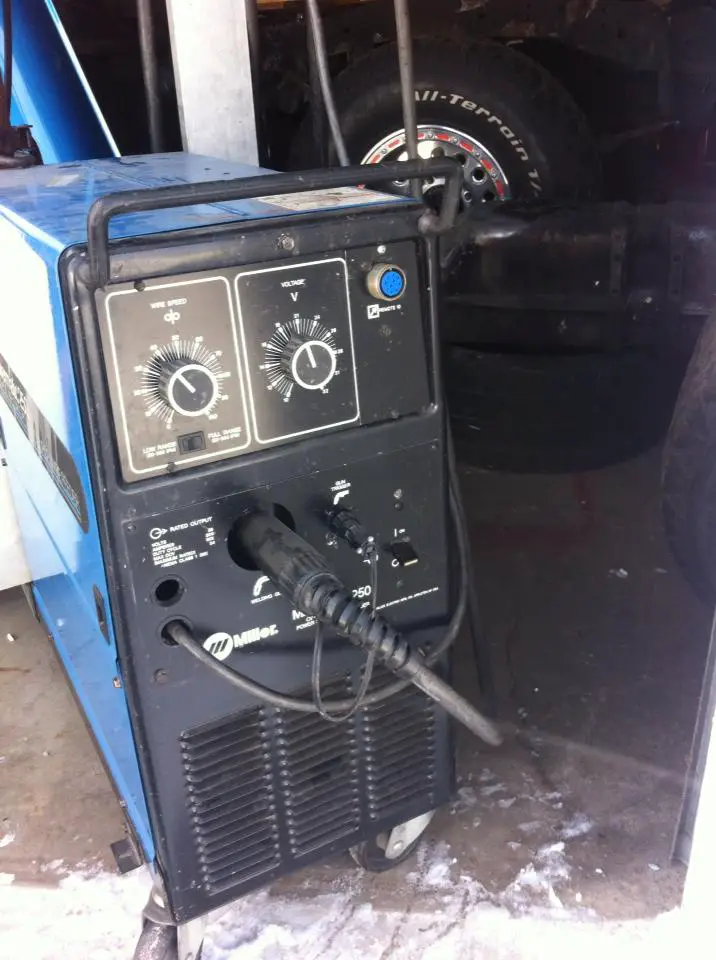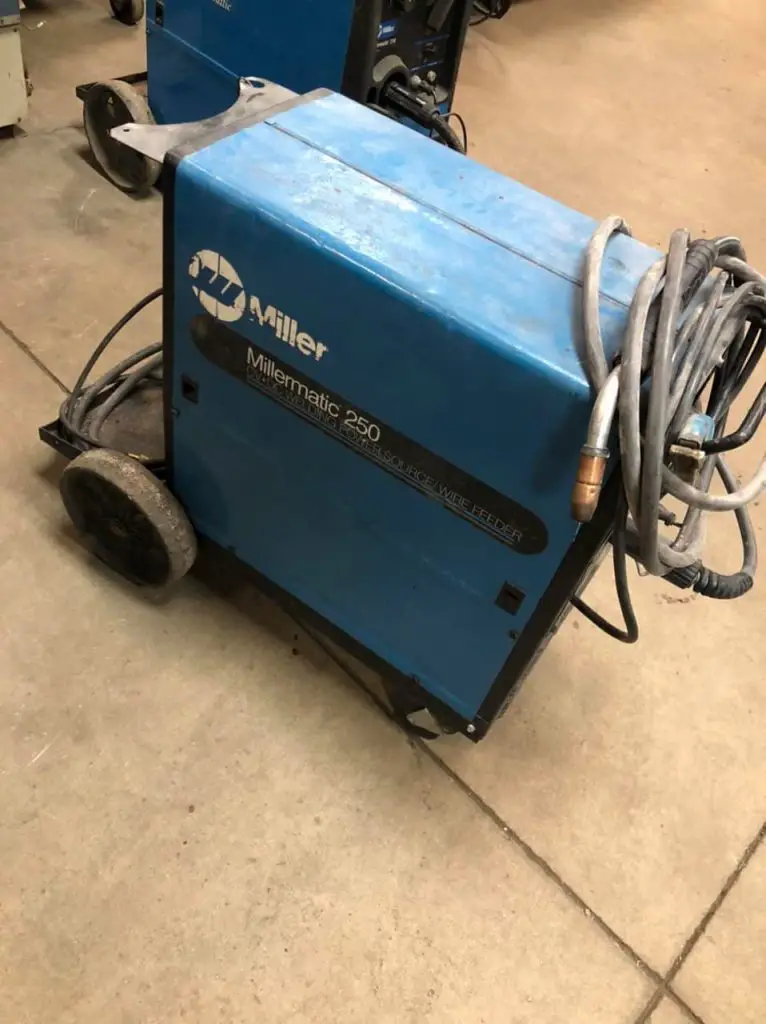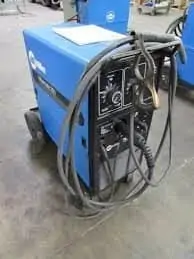Sometimes I take a trip down memory lane. Today my buddy and I were discussing some tools that we would like to buy. And of course, the discussion always circles back around to welders. My buddy was thinking about looking for a used Millermatic 250.
So naturally, he asked me what I thought. Especially since I love to try new welders, old welders, and virtually anything related to welding. I gave him my support.
Table of Contents
Is It Worth Buying a Used Miller 250 Welding Machine?
After searching for a while, my buddy thought he should buy this used Millermatic 250 off Craigslist.
I believe that’s smart, mainly because you’ll have more cash available for welding gear, of course! Having said that, search for a welder on Craigslist if and only if you know exactly what to look for!



What to look for on a used Miller 250?
The last thing you want to buy is a damaged welder. You’ll want to check a few things closely with any used welder.
Things such as:
- Does it lay a nice steady bead?
- Does the wire feed evenly or does it slip and sputter?
Said another way:
- Does it provide a good arc?
- Is the wire feeding smoothly at all speeds?
These two tests will let you know if power is properly fed through the unit.
Additional things to check out:
- The drive – make sure the drive wheels being used are correct for the wire size and that tension is set correctly
- The gun – make sure the tip does not have slag interfering with the wire feed, is not bent and the gas cup is in place
- Let the gas run – pulling the trigger should allow the flux gas to be delivered to the gun tip. If the bottle has gas in it and the regulators are set properly and no gas is coming out, the gas solenoid may be bad. You don’t want to have to replace that if possible.
More info about the Millermatic 250
In this review, we’ll discuss the Millermatic 250 and:
- Some of the Pros and Cons of this model
- How this unit compares to new models
- Which model would I choose for a welding shop
So let’s jump in:
Pros
- Solid, dependable machine – if you have some experience
- Bulletproof – Older technology means less maintenance
- The aluminum drive is very similar to Hobart’s Ironman drive
Cons
- The variable voltage controls can be tricky – hard to “dial in” your welder
- It is heavy at 225 lbs
- The duty cycle is limited: 40% @ 250 amps – even though most will not need 250 amps very often
Now, let’s unpack that last statement first and start from the beginning.
What is the duty cycle?
A duty cycle works like this: Take a 10-minute block of time. Ok, got it? Now, if your duty cycle is 250 AMPS @ 40% that means you can weld for 4 minutes continuously and then your welder must rest for 6 minutes.
Or your welder will die! Not really…But, it will overheat, potentially causing damage to key parts, including the motherboard. And you really don’t want that.
Now AT 250 amps max @ 40% you’re not doing a whole bunch of welding. Well, continuous welding, that is. However, again not many welders will need to weld at the 250 amp setting very often.
The variable voltage is more difficult to adjust on this machine than a standard stepped voltage adjuster. If just starting out, this may be more than a new welder wants to handle.
The Miller 250 is a really good welder in the right hands
You really need to have welding experience, or else you may get those harsh starts and spatter everywhere. And, you’ll burn back the wire into the tip.
So what did I tell my buddy about the Millermatic 250? Buy it!
And that’s not because I’m a welding nut. Well, I am, of course, but it was the right deal for the right person. Let me explain, my buddy is also a professional welder and was looking for a bulletproof backup machine for his shop.
And, the price was right.
I mean for a few hundred bucks, he got the machine and:
- A full bottle of welding gas
- A full spool of .035 wire
- New Gloves
- A decent helmet
- Wire snips
- And some extra tips
Of course, he had to test-run the machine first. But she welded flawlessly and the wire feed was smooth.

History of the Miller 250
The Millermatic 250 is an older MIG / Flux Core welder produced from 1991 to 2001. It may have either analog or digital readouts depending on model year. It was replaced by the 251, then the 252.
Like any welder, there is good and bad to the Millermatic 252. I’m not a fan personally because, in my opinion, the 252 has some issues.
Such as:
- Infinite voltage control
- Digital readouts for AMPS and Volts
- Still 250 AMPS @ 40% ( Top end is 300A max)
- Price
The infinite voltage control is confusing in my book. Why? Because new welders will spend too much time trying to dial in the perfect voltage. And that means they will spend less time perfecting their actual welding technique for a given voltage.
Miller 250 Alternatives
Like the ones used by Hobart. Because it’s simple to remember that if I am using a particular gauge wire on a particular gauge steel, then I know from experience to put it on a particular setting.
Simple. I like simple. Because simple works, every time. For instance, the digital readouts are an unnecessary feature with additional electrical hardware that can potentially fail. With knobs, if they fall off you just pop them back on always knowing your voltage settings. In contrast, if a digital display goes out you will be in the dark, literally.
Conclusion
I really like the 250. It meets my needs as a professional fabricator. This, even though I prefer my Lincoln Electric machine for my primary shop welder.
- It’s simple to use with just a little experience
- It’s fairly bulletproof and well built.
If you’re a professional fabricator and find a good Miller 250 used, I feel it can be the perfect backup machine for your shop. Or, the perfect primary machine for the hobby welder with a little experience.
